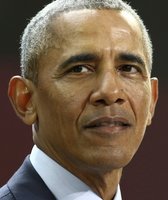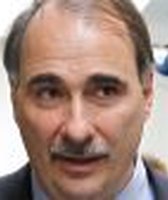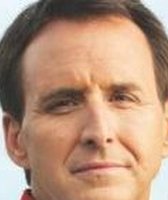Stand up for the facts!
Our only agenda is to publish the truth so you can be an informed participant in democracy.
We need your help.
I would like to contribute
The rich are, in fact, getting richer
In an interview making the rounds on the Internet due to its, let’s say, aggressive tone of questioning, Barbara West of WFTV in Orlando grilled Sen. Joe Biden about Sen. Barack Obama’s tax plan and at one point cited Karl Marx to ask whether Obama’s plan to "spread the wealth around" amounted to Marxism.
She also asked this doozy: "Sen. Obama now famously told Joe the Plumber he wanted to spread his wealth around. A Gallup poll showed 84 percent of Americans prefer government focus on improving economic conditions and creating more jobs in the U.S. as opposed to taking steps to distribute wealth. Isn’t Sen. Obama’s comment a potentially crushing political blunder?"
"Absolutely not," Biden answered. "The only person who has spread the wealth around has been George Bush and John McCain’s tax policy. They have devastated the middle class. ... For the first time since the late 20s, 1 percent of the American people make over 21 percent of all the income in America. That wasn’t the way before George Bush became president."
In highlighting the growing income disparity for the very wealthy, Biden is citing an analysis of U.S. tax returns published in the Quarterly Journal of Economics in 2005. Updated versions of the report show that in 2006 (the most recently available year) the top 1 percent made 22.8 percent of all the income in the United States.
And Biden is correct that it hasn’t been that high since 1928.
End of story? Not quite.
When Biden says "that wasn’t the way before George Bush became president," some context is in order. The increase became evident long before Bush took office.
In 2000, the year Bush won election, the top 1 percent made about 21.5 percent of all the income in the United States. So, 21.5 in 2000 to 22.8 in 2006. An increase, but not huge.
And the percentage of income captured by the top 1 percent has risen steadily since the 1970s (when it hovered around 9 percent) and through several presidencies. It began to soar in the 1980s, and reached new heights and grew more quickly during the 1990s administration of Bill Clinton, a Democrat. The number dropped in the early 2000s with the burst of the dot.com bubble, and then steadily increased until 2006. So while some of Bush’s policies have favored the rich, economists say it is not fair for Biden to lay the entire rising income gap at Bush’s feet.
"The big picture is that we have seen dramatic increases (in the percentage of income for the top 1 percent) over the last couple decades," said Emmanuel Saez, professor of economics at University of California and a co-author of the study.
Saez thinks more attention is being focused on the figures now because during the Clinton administration expansion, the bottom 99 percent captured more than half the growth. During the Bush expansion, real incomes for the bottom 99 percent remained fairly stagnant, while the top 1 percent captured 73 percent of the growth.
Bottom line, says Gary Burtless, a senior fellow in economic studies at the Brookings Institution, the bottom 99 percent fared better under the Clinton administration than they did under Bush. Under Clinton, the very rich got richer, as they have under Bush. The difference is that under Clinton, the average salary for the bottom 99 percent increased from $35,500 to nearly $42,000; while under Bush the average salary for the bottom 99 percent has actually gone down $1,100.
Economists point to several reasons for the growth in disparity between the very rich and everyone else, including the decline of labor unions, the loss of high-paying manufacturing jobs to cheap labor overseas, rising executive pay, and the relative drop of the minimum wage from 1981 to 2007. While goods and services became more expensive, the minimum wage stayed the same.
Bush has, however, exacerbated the after-tax income inequality with tax cuts that disproportionately help the rich, economists said. He also has resisted congressional attempts to cut costs for the working poor, such as by opposing an expansion of a popular children’s health insurance program that he says helps some who don’t need it.
Biden cites the number accurately for the amount of income captured by the top 1 percent, and he’s technically right when he says "that wasn’t the way before George Bush became president." It went from 21.5 to 22.8. We allow that there is a more stark difference in how well the lower 99 percent fared, which backs up Biden's overall point about income disparity growing under Bush. It has, some. But the percent of income caputured by the top 1 percent has risen fairly steadily for decades, and we think it's misleading for Biden to suggest this disparity didn't exist before Bush. And so we only give him a Half True.
Our Sources
Quarterly Journal of Economics, Income Inequality in the United States , February 2003
Emmanuel Saez Home Page, Updated version of "Income Inequality in the United States, 1913-1998"
Internal Revenue Service, Adjusted gross income share of top 1 percent; Share of taxes paid by top 1 percent, 1986-2005
U.S. Census Bureau, Historical aggregate income, by fifths and top 5 percent
U.S. Census Bureau, Median income, 1984 to 2006, adjusted to 2006 dollars
Tax Policy Center, Bush Administration Tax Policy: Distributional Effects
Center on Budget and Policy Priorities, Analysis of the Saez-Piketty data
PolitiFact, Can't Blame Bush
YouTube, WFTV interview with Joe Biden , Oct. 23, 2008
Interview with Emmanuel Saez, professor of economics, University of California at Berkeley, Oct. 27, 2008
Interview with Gary Burtless, senior fellow in economic studies, Brookings Institution, Oct. 27, 2008
Browse the Truth-O-Meter
More by Robert Farley
The rich are, in fact, getting richer
Support independent fact-checking.
Become a member!
In a world of wild talk and fake news, help us stand up for the facts.


















































